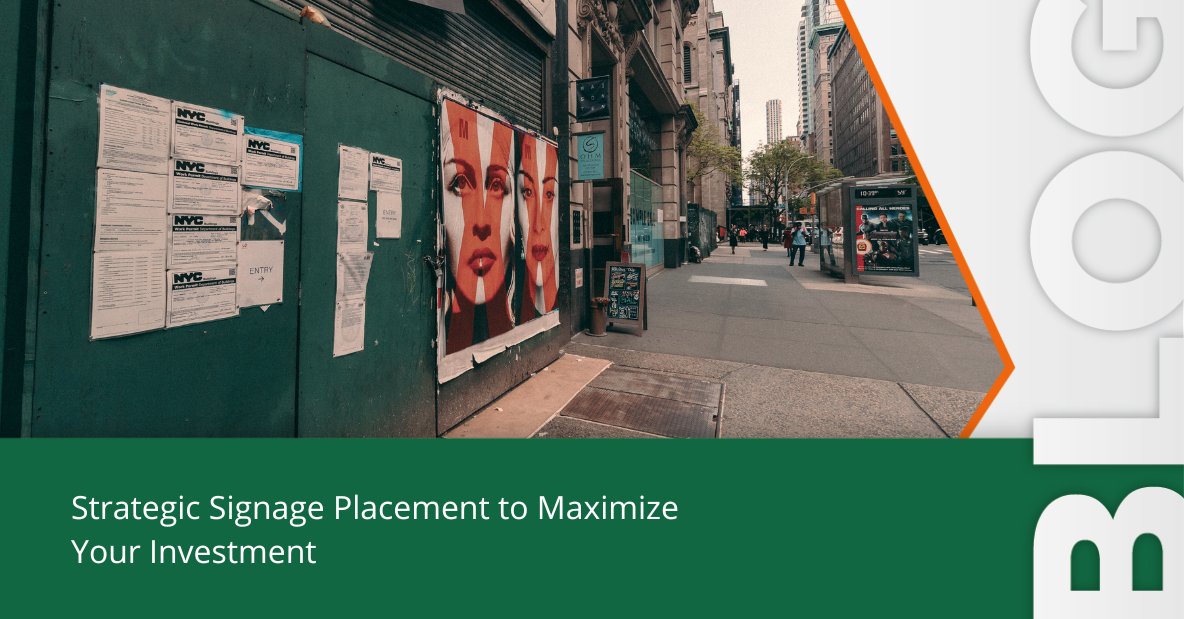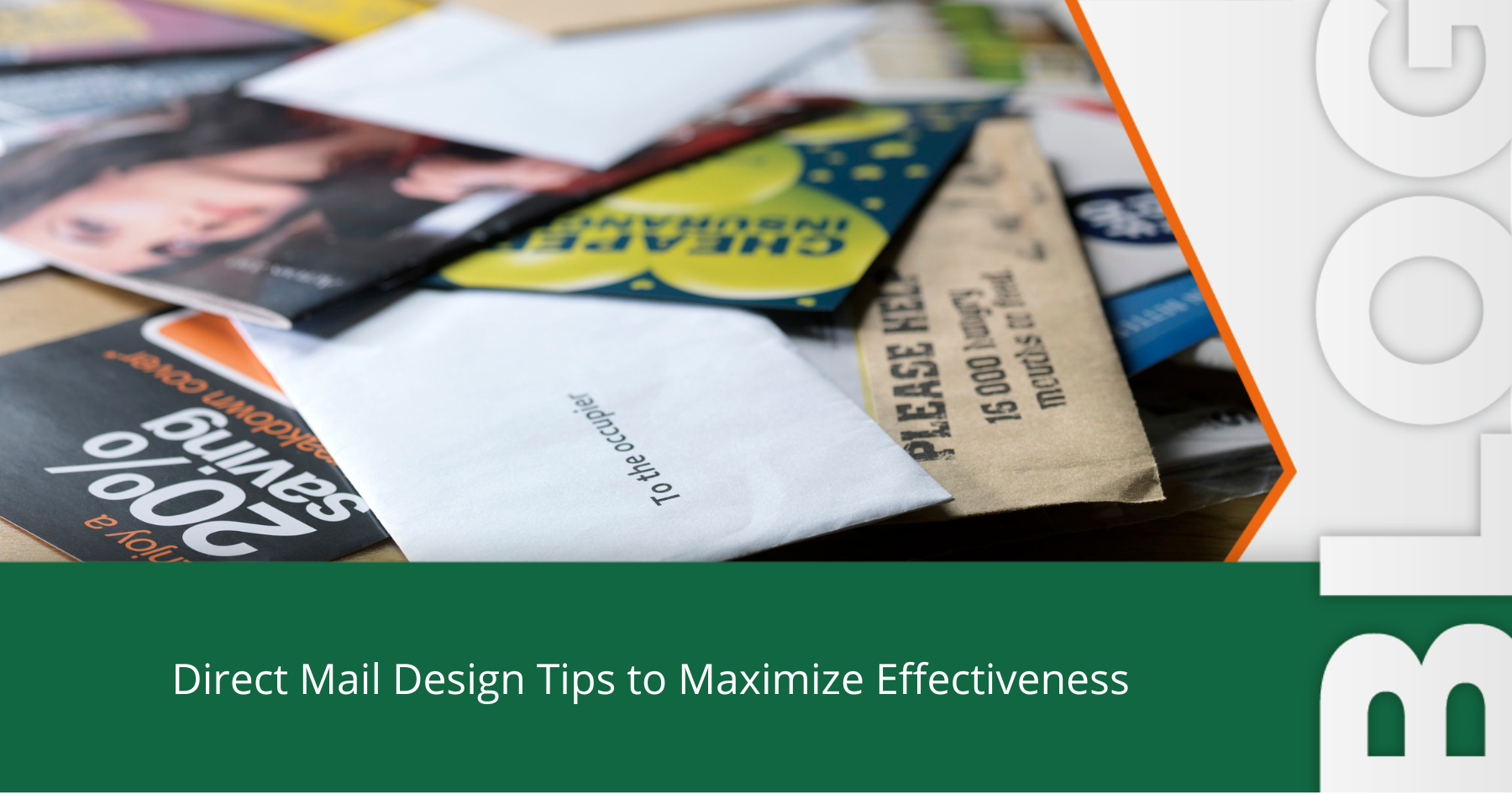
Having a great sign is one of the most important things your business needs if you operate out of a brick-and-mortar location. Even if you don’t have a permanent physical location to display your sign, you can effectively promote your business by posting up in an area your target demographic frequents or bring portable signage with you to the tradeshows and events you attend. In addition to your main sign, there are so many ways you can use secondary signage to draw attention to your business. Strategic placement is key to making sure you get the most out of your investment.
To learn more about the options you have for strategic signage placement, check out our advice below!
For Strategic Signage Placement Outdoors Try:
1. Along the street
The average person spends several hours driving their car every month, which makes advertising along major roadways a smart place to advertise your business. Advertising on the side of the road can be an effective way to get people to come visit your location since they are already mobile in their vehicles and can easily take a detour if they have the time. Additionally, commuters who regularly frequent the area where your signs are noticeable will be very likely to remember your business when they need your services.
2. Nearby other billboards and signs
Billboards can be very expensive to rent yourself but that doesn’t mean that you can’t take advantage of the attention they draw. By setting up your signs near these focal points, you can get noticed since so many people will be looking in that direction to begin with. If you decide to put up a large sign, make sure it is not far from your actual location so that its easy for drivers to a) find and b) pull over and pay you a visit.
3. In front of your shop location
It goes without saying that your shop should have a sign directly out in front of it. This is part of good branding, which reinforces the experience you want your clients and customers to remember when they walk in the door. In addition to your main storefront sign you can use something called a blade sign, which projects out of the side of a building to make its entrance noticeable from different angles.
4. In the parking lot
This is a great idea especially if your location is in a shared parking lot with other businesses. Having signage here will help visitors find you and advertise your presence to other shoppers in the area.
For Strategic Signage Placement Indoors Try
1. Along walls
Having signs on your walls is a great way to call attention to specific products you offer. Indoor signage can also assist in branding by creating an atmosphere that can be seasonally altered or changed depending on current products and campaigns. Working with a graphic designer to create eye catching designs will elevate your style and help you achieve the look you have in mind.
2. Behind a reception desk
Your reception desk is likely a focal point in your space, so posting signage here that you want people to pay particular attention to makes a lot a sense. This is a great spot for informational signs that will guide people through the purchasing process, or to upsell them by showcasing available upgrades as they are nearing the end of their in–store experience.
3. In windows
Windows are great additional space you have at your disposal to feature signage. Often a front window may even be bigger than the space you have for your main storefront sign, so use it to make your location even more identifiable to passerby. With our decals you can easily remove and switch your window signage as often as you want without damaging the glass, making them a great signage option.
Things to keep in mind
Size
Your signage needs to be relative to the scale surrounding it. You wouldn’t use a sticky note as a poster on large wall, would you? The same principle applies here. Make sure you take measurements before placing your order, things can turn out different than you expected if you aren’t careful. A pro tip is to use a blank sheet of paper and post it on your desired location to visualize what the size of your sign will look like in person.
Legibility
What looks great up close on your computer screen may not translate so effortlessly to a banner or printed sign. Its important to be mindful of design principles when coming up with your signs to make sure they are easy to understand up close and from a distance. Check out this blog to learn more about improving design legibility.
Weather
If your sign will be placed outdoors it needs to be able to stand up to the elements. Rain, snow, hail, and sun all take their toll on the materials you use so investing in high quality materials makes the effort of creating and putting up a sign worth it.
Permitting
The last thing you want after you’ve designed, created, and strategically placed your signs is to find out that you’ve received a ticket or had your signs taken down. Some areas require special permitting from the city to be able to post signs without running into any trouble. Be sure to look into the rules for your specific region to make sure you can display your signs where you would like them.
Mounting
To prevent your signs from blowing away in the wind or peeling off after a rainy spring day, you need to use the appropriate mounting strategy for your conditions. Some signs will require a sturdy frame if they are rather large or heavy, while others don’t need as intensive structural support. If the goal is portability, mounting your sign on a sandwich board (aka an A-frame) could be the perfect solution. Check out our product offerings to learn more about available options.
Conclusion
Now that you know how to use strategic signage placement to your advantage, its time to start planning out your designs! Contact us today to chat with a graphic designer or to place your signage order today.

